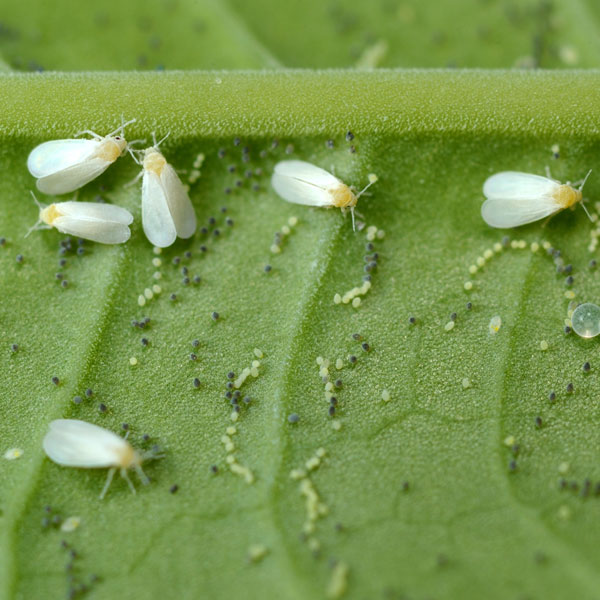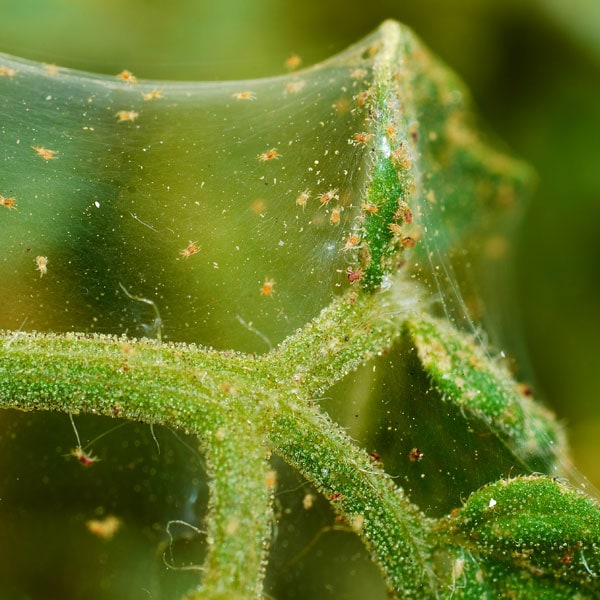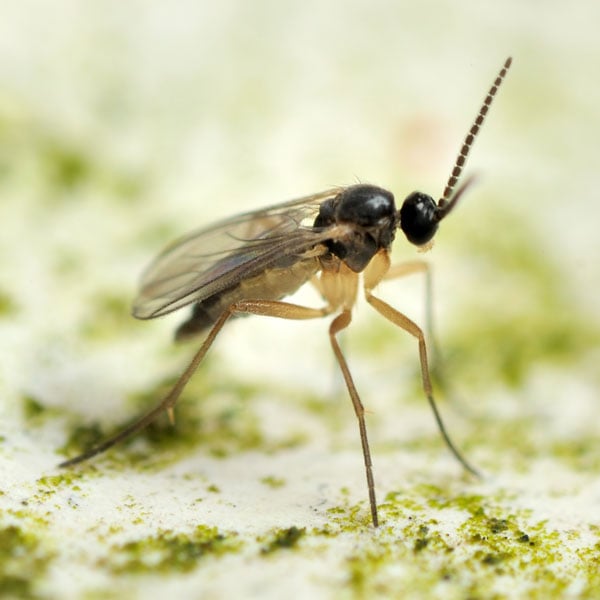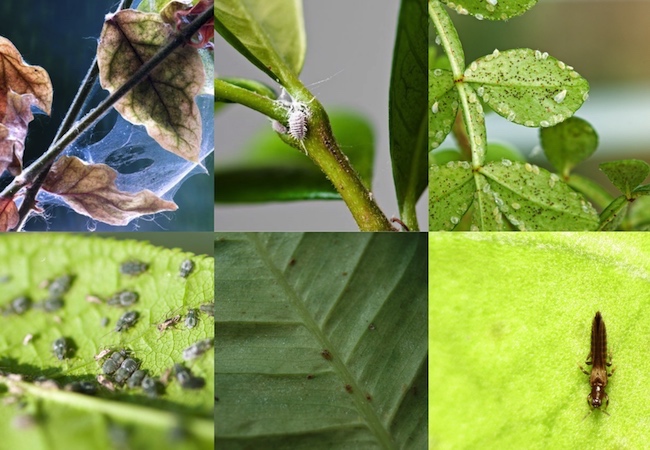Pests are organisms that often reduce the yield and quality of a plant or a crop. However, those dealing in hydroponics usually don’t face the same risk of pest infestation compared to outside gardening. Still, it is necessary to remain intact and concerned while protecting your plants from pests as dozens of insect pests are frequent invaders of hydroponic plants and grow rooms.
While going hydroponic, it is good to be vigilant as an infestation can quickly wipe out all the hard work done in your garden. Here are plethoras of ways that let you protect plants and control hydroponics pests to keep your garden thriving and healthy.
Whiteflies

Whiteflies are tiny 1mm - 3mm powdery white moth parasitic insects that tend to suck sap from leaf veins both in nymph (wingless) and adult (winged) stages. Despite their small size, whiteflies are easy to spot but harder to kill as they fly away as soon as you try to catch one. Whiteflies shelter on the underside of older leaves, and at the time of feeding, they excrete a sweet fluid (honeydrew) that provides an appropriate environment for sooty mold to grow. A common sign of whiteflies feeding the plant includes dryness of the leaves, silvering & yellowing of leaves, white spots on leaves, stunting & wilting of new shoots, and uneven ripening of fruit.
Solutions for getting rid of Whiteflies
- Spray adequate pesticides undersides the stems and leaves where the nymphs cluster.
- Lure and Capture adults around the plants by placing sticky traps.
- Spray Neem oil to destroy whiteflies’ growth and feeding patterns.
- Spray regularly on the plants and leaves to stop nymphs from turning into adults.
Aphids

Aphids are pear-shaped soft insects that are also known as plant lice. They can be of different colors that include yellow, black, green, gray, or pink. The little parasitic guys are small in size ranging from 1mm – 4mm and established around the plant stems. Aphids are tempted by stressed or weak plants and towards plants with too much nitrogen in their food source. Unlike Whiteflies, Aphids suck sap from young plant stems, leaf veins, flower buds and excrete sticky honeydew, which attracts ants that feed on it to turn them yellow and weaken them.
Aphids are categorized with wings and no wings, while others don’t harm plants much but reduce plant health to such an extent where their leaves begin to distort and twist. Generally, Aphids gather around the stems but still, they can be found anywhere on the plant and weaken it entirely. Apart from that, Aphids are responsible for spreading viral diseases such as broad bean wilt from one plant to another. When found on a plant or a leaf, take prompt measures to remove Aphids as they can populate very quickly.
Solutions for getting rid of Aphids
- Grow plants with organic food and avoid high-nitrogen-based synthetic fertilizers for plants.
- Douse water on plants after the regular interval to get rid of Aphids.
- Use insecticidal soap to restrict the growth of Aphids.
Spider Mites

Spider mites are the commonly found indoor garden pests that are even smaller than whiteflies, that length less than 1mm. The tiny spider-shaped little buggers are considered the most dreaded infester in the hydroponic system as they go unnoticed until they seriously damage your plants. Spider mites are arachnids that are only the size of a pinhead and are hated widely for their infestation.
Spider mites may vary in color as nymphs are paler green or yellow, while adults are reddish, pale green, or yellow. Their feeding pattern involves sucking juices from stems that result in the weakening of the plants. One can spot spider mites infestation in three different ways - one is to look for fine webbing on new shoots and leaves. Second, if a yellow speckle appears on top of leaves, then it’s a clear sign of infestation by Spider mites. Third, gently wipe the underside of leaves with the help of tissue, and if streaks of spider mite blood appear on the tissue, then it’s a clear sign of infestation by spider mites.
Solutions for getting rid of Spider Mites
- Maintain a stable humidity level as close to 50 percent as possible as it is ideal for plants and deadly for spider mites.
- Don’t keep the environment dry and keep moisturizing the plants after a time interval.
- Use Pyrethrin, a naturally occurring substance in chrysanthemums that stops spider mites and other bugs by paralyzing them and eliminate feeding at all stages.
- If you notice webbing from spider mites on any plant, isolate the plant immediately to stop spider mites from migrating to other plants.
Thrips

Unlike Aphids, Thrips are tiny (1mm – 5mm long) plant-juice sucker insects found in brown, yellow, and black color mostly on herds. Despite the small size, damage caused by Thrips is easy to see, but they are tough to identify. Thrips primly target flowers and the unfertilized buds and often leave the targeted flower, leaves, and petals dark and brittle. As they suck nutrients out, the color of the leaves turn yellow or brown and leave black dots on the upper sides of leaves. The Greenhouse thrips insert their eggs into leaves and stems by boring holes in them to diversify.
Solutions for getting rid of Thrips
- Stir up Thrips by gently shaking the plant where the infestation occurred.
- If the eggs of the Thrips are found on the plant, scrape them off with a sharp object and crush them.
- Add potassium salts of fatty acids to wash off the plant and prevent it from exterior bugs.
- As Thrips have a short life cycle, it is necessary to repeatedly apply insecticidal soap three or four times after intervals of 10-day.
Fungus Gnats

Fungus Gnats is another insect that looks similar to Whiteflies but has a slight difference in color (dingy grey). The larvae of Fungus Gnats are most harmful as compared to the young ones. It is because larvae of this tricky pest feed on roots and feeder roots which later can invite bacterial infection and slow down the plant growth or even result in the death of the plant. The larvae develop in the dark and dank conditions around the base of the hydroponic plants.
Solutions for getting rid of Fungus Gnats
- Use algae and moss killing treatment to prevent maggots from feeding on algae.
- Use sticky traps to catch adult flying Fungus Gnats that lay eggs at the base of the plants.
- Apply or sprinkle a combination of Pyrethrin spray, neem oil, and insecticidal soap to eliminate adults Fungus Gnats.
- Take prompt action by discarding plants affected by maggot infestation.
Conclusion
Getting over infestation is a complex process; however, if effective measures are taken within the desired time frame risks associated with plant growth can be minimized to reap benefits accordingly.

